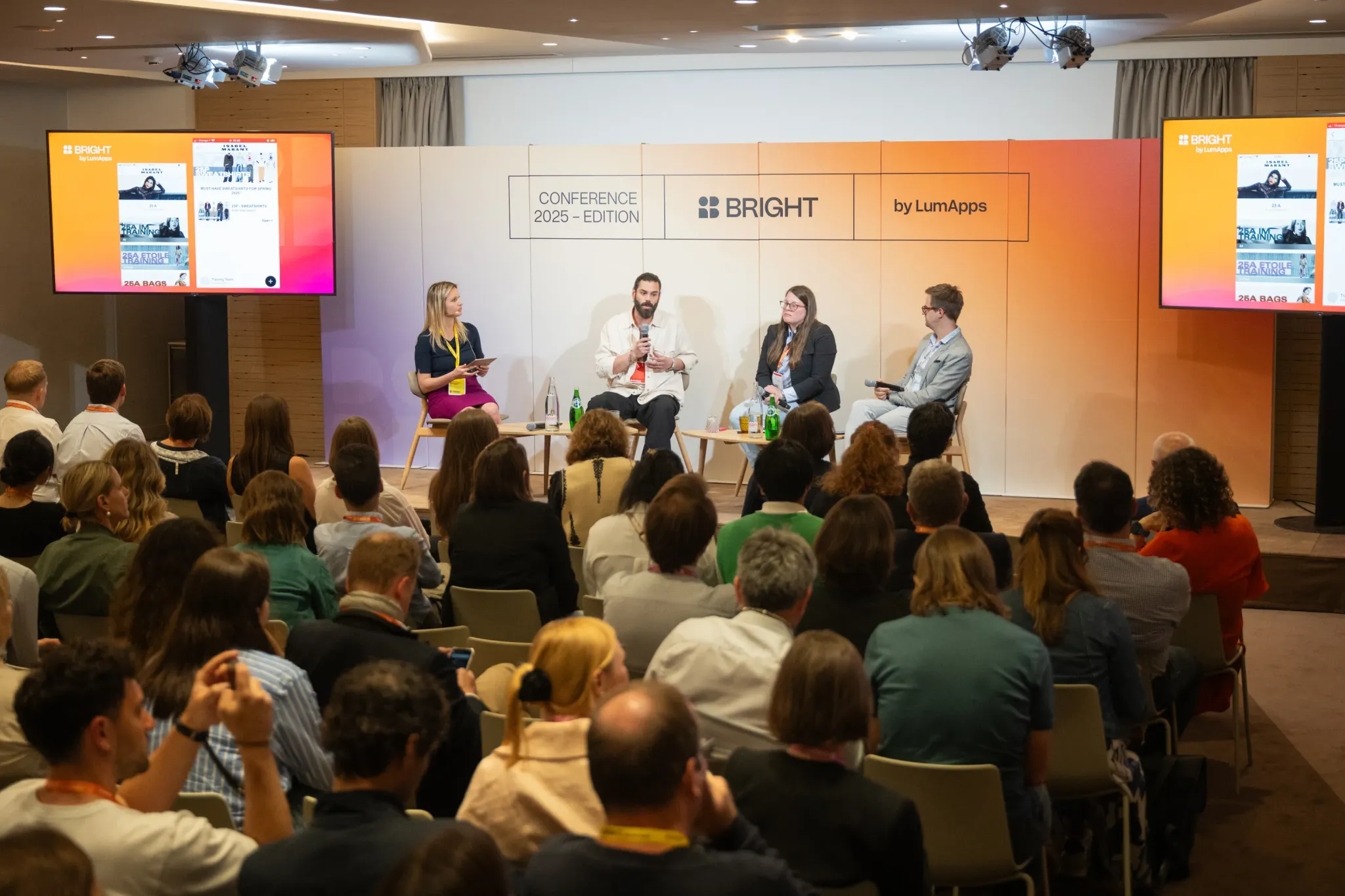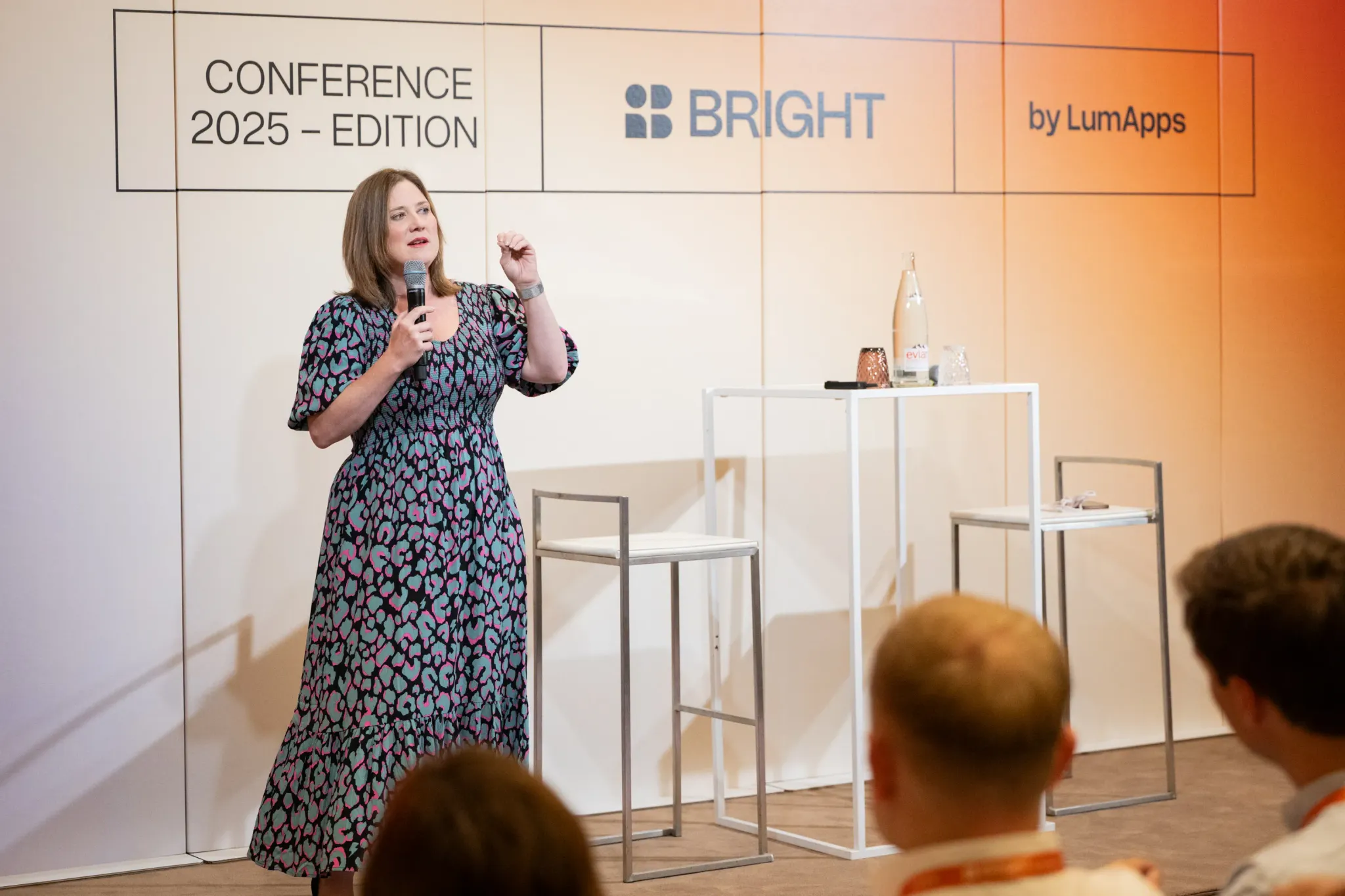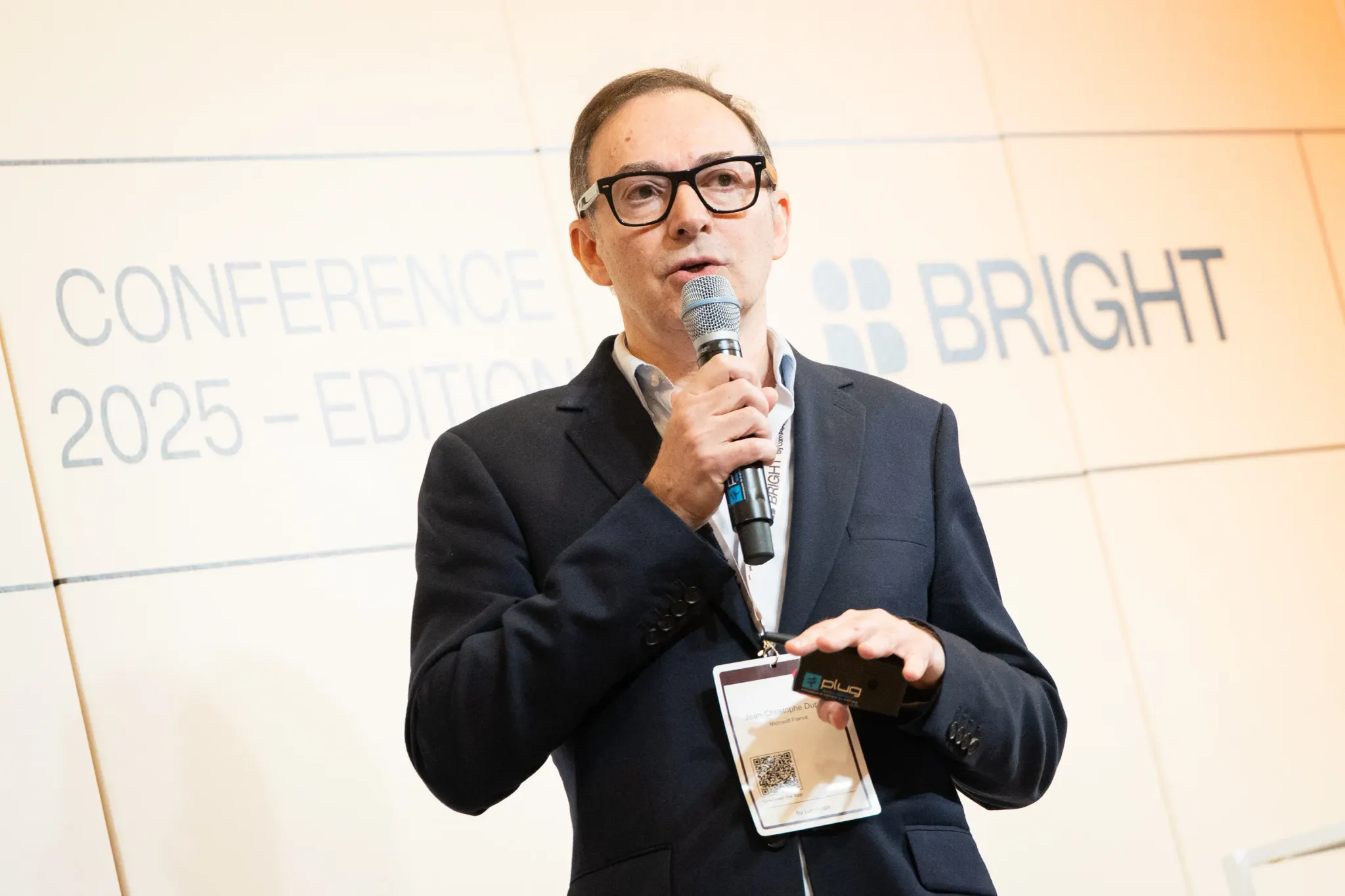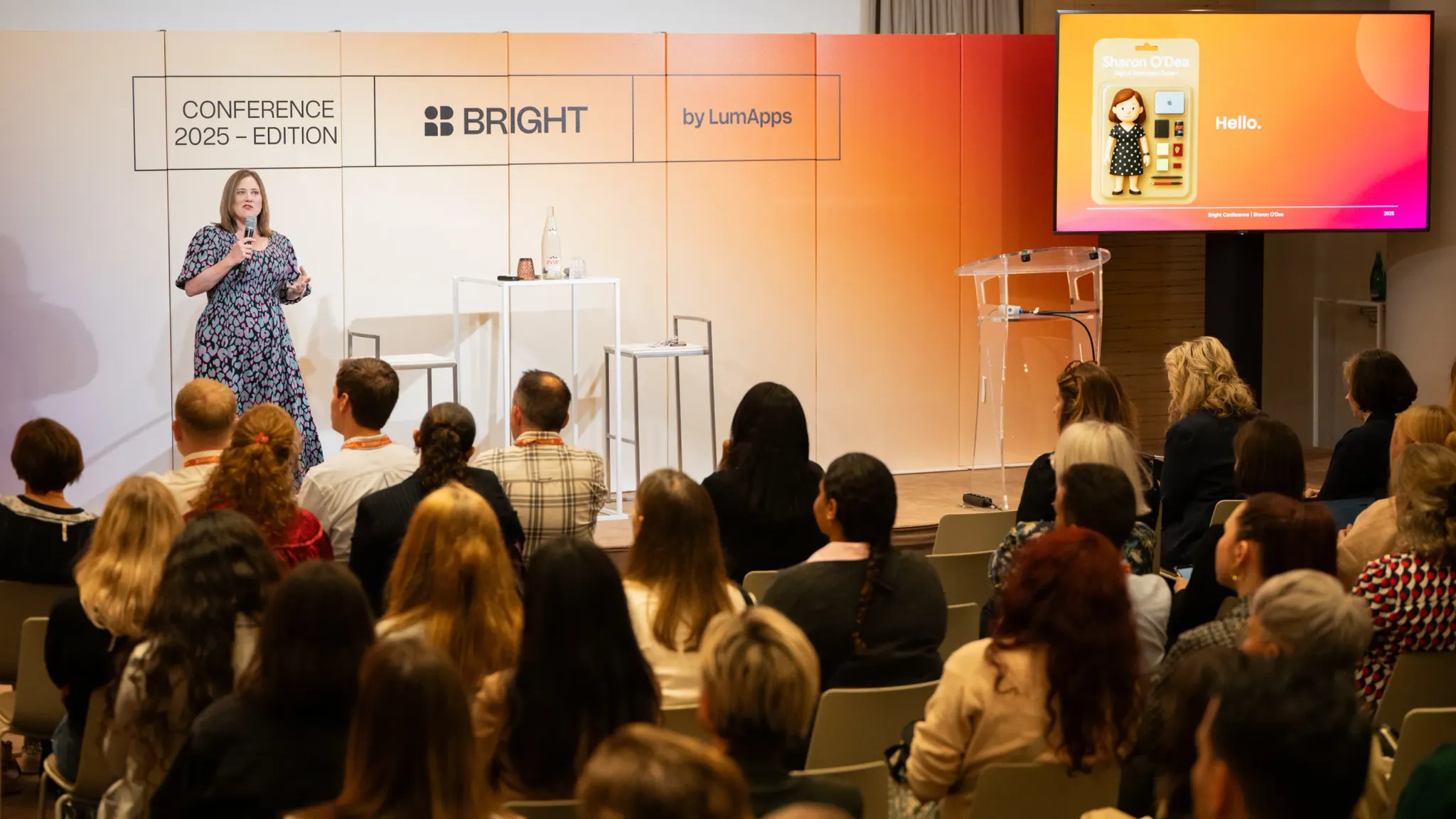Platforms, Processes, People: Which is Most Important?


Platforms, Processes, People: Which is Most Important?
The digital workplace isn’t just about platforms and processes. It’s about people. That was the message consultant Sharon O’Dea delivered during her talk at Bright Conference, Paris. Founder of DWXS and Lithos Partners, O’Dea recognizes that the rise of SaaS tools has created a fragmented workplace, while the apps people use outside of work – Netflix, Spotify, Instagram – offer seamless experiences.
Her session explored the importance of unifying the digital employee journey via the intranet as a central hub. “At the heart of all this is people,” she said. “We focus so much on technology – but everything we do in the digital workplace is about unlocking potential.”
If you didn’t catch Sharon’s inspiring speech about humanizing the digital workplace, here are the highlights. You can also unlock and watch the full talk here [LINK gated video]
Toggle Tax
Digital isn’t just part of how we work – for most people it’s the main way we get things done. The average enterprise uses around 285 SaaS caches a day. Most people switch between nine or ten apps – that means we're switching about twelve hundred times on any given day.


“Every time we switch, we need to reset,” O’Dea said. “That’s called the toggle tax – it’s the mental cost of shifting from doing one thing to another.” If it’s not seamless, each little shift breaks focus. It’s not just annoying, because the toggle tax – or digital friction – can affect talent retention. 49% of employees say they would consider leaving their jobs because the technology experience isn't good enough.
Integration, Not Fragmentation
Right now, most apps have their own look, language, and way of working. The result is “a big mess of inconsistent design, of confusing labels, of overlapping functions, of disconnected processes,” O’Dea said. Our expectations for digital experiences have changed – companies need to keep up. If it’s easier to order a pizza at home than book a meeting room at work, that’s a problem. “If we want people to do their best, we need to meet their expectations.”
On their own these apps make sense, but if they’re not integrated, disjointed systems chip away at our sense of well-being, of satisfaction, and ultimately, that affects things like retention. In a competitive talent market, a seamless digital experience isn't just a nice-to-have. It’s a key part of the employee value proposition.
The answer isn’t to stop using apps, it’s to integrate them into a single interface that hides complexity. Employees don't want to wade through generic updates. Personalization and targeting using AI allow us to filter huge amounts of data to give people what they need in a nuanced way.
Human-centric for the Win
For most of us, the distinction between the digital employee experience and the more holistic employee experience is a false one. When our systems are engaging, intuitive, easy to use, and integrated, we see real results. Productivity goes up. Engagement improves. People feel like the organization respects their time.
A truly human-centric work experience brings together four areas of functionality:
- Collaboration
- Communication
- Knowledge
- Transactions
We need to design experiences for people that are coherent, consistent, and genuinely helpful. This requires a central hub that connects all these aspects. If you’ve got an intranet or employee app that’s your main point of entry for information and services – HR, business tools, knowledge sharing and communication – that's the full ecosystem. Your intranet shouldn’t be just about utility, it's a cultural space, too. It reflects who you are as an organization.
What’s more, the needs of every employee will be different and will change over the course of each day. How can you tailor an employee experience to shifting requirements and expectations? “We need to think about building empathy, surfacing user needs, and making sure those needs guide the decisions we make about design,” O’Dea said.
Better Than the Shiny New Thing
Intranets are not the shiny new thing, O’Dea said, but they have never been more important. In a world of “scattered apps, the intranet acts as the single point of entry, the thing that makes all of this make sense.” It's the place where we can bring everything together – communications, tools, resources – into a consistent, high-quality experience that matches those elevated expectations we all now have.
All of this is supported by two critical enablers:
- Data – which is critical to drive relevance, to drive personalization, and to get insight as well drive future improvement.
- A consumer-grade user experience, which is as good as the apps that people use every single day.
The intranet is the living breathing heart of our workplace. When everything follows the same logic then people feel confident, they can complete things faster, and they're less frustrated.
This isn't about technology, it’s about bringing the humanity back into the workplace through the digital tools that we use, making them simpler, more intuitive, and more meaningful for everyone. People deserve better than clunky, disjointed tools. They deserve delightful, integrated, productive experiences that make their working lives easier.
Find out more about how harnessing the power of your enterprise internet. Watch the recording of O’Dea’s full talk.




